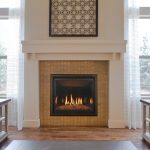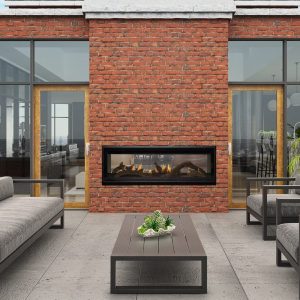
Description & Features
Direct Vent Gas Fireplace That Offers Exceptional Performance
Our direct vent gas fireplace is available in a visually appealing traditional log set or glass media style. Direct vent gas fireplaces don’t require a chimney or existing fireplace for successful installation – they can be fitted almost anywhere, including on interior walls and in modern homes.
Save on Your Fuel Bills with an Energy-Efficient Direct Vent Gas Fireplace
The Bayport 36 operates at 26,500 BTU/hr when natural gas is used and 26,500 BTU/hr for LP gas. Energuide testing shows that the Bayport 36 operates at 76% for natural gas and 68% for LP. These figures are some of the best on the market, ensuring that when you buy this fireplace you’ll enjoy a high level of warmth for a relatively small energy outlay.
Exceptional Build Quality and Attention to Detail
Not only does this direct vent gas fireplace benefit from excellent energy efficiency, it also comes with many additional features that make it easy to use and extremely convenient. A remote control enables users to set the temperature as they wish, ensuring a comfortable ambiance at any time. Further features include a choice of refractory linings, many different decorative fronts, a fan kit features that will enable you to customize your fire as you wish.
Direct Vent Gas Fireplace That Provides a Beautiful Accent to Any Room
Energy-efficient, straight-forward to install, easy to operate and providing an exceptional level of heat output, the Bayport 36 is a great investment that will give years of good service. If you’re looking for a stunning contemporary solution with a traditional twist to your fireplace needs, we’ve got the right products for your needs. For details of your nearest dealer or for anything else, contact us via our simple online form
Standard Features
- Comes in Log or Glass media
- Top-Vent Ready (rear-vent convertible)
- High Quality Lifetime Glass
- Fan Kit CFM Blower
- Standard on Bayport 36 Log
- Optional on Bayport 36 Glass
- Remote Control –Full Function
- Bayport 36 Log and Bayport 36 Glass only
- High-Low Regulator
- Engineer-Designed burner system
















